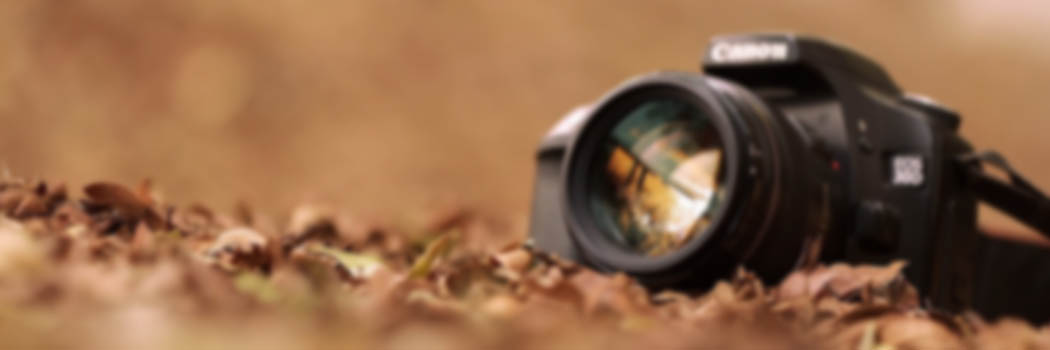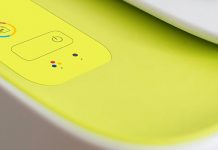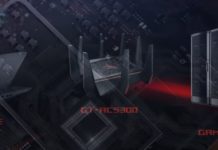This article has been just updated: January 17, 2024
Digital single-lens reflex cameras, or DSLRs for short, are what separates professional from amateur photographers. Their large image sensors capture even the tiniest details and render colors with utmost accuracy.
In addition to their superior image quality, DSLRs are also sprinkled with buttons that allow you to comfortably change important settings without having to go through a whole cascade of menus. Of course, they are also compatible with many first- and third-party lenses, which means that you can always have the right focal length for any given situation.
But which DSLR camera in 2024 should you pick? Well, that depends mainly on your needs and personal preferences, but we can tell you which DSLR cameras you should choose from. Here’s a list of the top 7 best DSLR cameras in 2024.
We’ve included something for every budget, but don’t think that you have to spend thousands of dollars just to get a decent DSLR camera. Even entry-level DSLRs are good enough for you to unleash your creative side and capture everything from nature to animals to people and the cities where they live.
1. Nikon D850
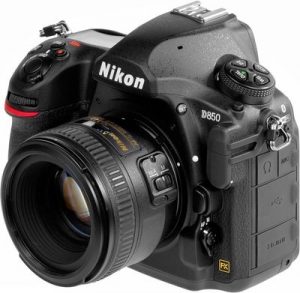
If you have a generous budget and would like your new DSLR camera to last you a while, the Nikon D850 is arguably the best choice you can make today.
Features:
With its massive 45.7 MP resolution and 64-25,600 ISO, the camera delivers professional results at a price even dedicated amateur photographers can afford.
Videographers can benefit from the camera’s 4K video recording capabilities, and everyone can appreciate the speed and precision of the EXPEED 5 image processor, which is the secret behind the D850’s wide dynamic range, subtle tonal and textural details, and nearly non-existent image noise.
Pros: 45.7 MP resolution. 64-25,600 ISO. 4K video recording capabilities. EXPEED 5 image processor. Great value
Cons: Costs more than its predecessor, the D810, but is also significantly more capable.
2. Canon EOS 5D Mark IV
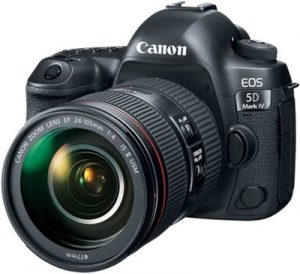
With each new generation of the 5D series, Canon sets a new benchmark for DSLR performance.
Features:
The Canon EOS 5D Mark IV is no different in this regard, featuring a refined 61-point AF system and Canon’s revolutionary Dual Pixel CMOS AF for quick, smooth AF for both video and Live View shooting. Its sensor has 30.4 MP and operates at ISOs of up to 32,000.
The camera has Wi-Fi connectivity, built-in time-lapse support, and two memory card slots to give you plenty of storage space for your pictures and video files.
Unfortunately, it shoots 4K video only at 30 frames per second, making it less than ideal for videographers looking for an affordable professional-grade camera.
Pros: Reliable autofocus. Wi-Fi connectivity. ISOs of up to 32,000. Wide range of lenses to choose from.
Cons: Limited video recording capabilities.
3. Sony Alpha A7 III
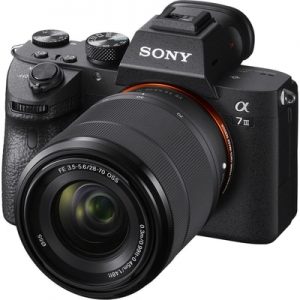
Some photography genres are not compatible with the sound of a DSLR mirror clattering with each and every shot. Just imagine shooting a wedding and seeing how all attendees become more and more irritated with each shot you take with your bulky DSLR camera.
Features:
All of this is avoidable with the Alpha A7 III, a mirrorless camera with outstanding imaging capability and unmatched flexibility.
Its 24.2 MP Exmor R CMOS sensor features a back-illuminated structure that helps it achieve high data readout and processing speeds to support its 10 FPS burst shooting mode. The camera is much more portable than traditional DSLRs, but it’s ergonomics don’t suffer.
Pros: Shoots uncropped 4K video footage. Features a very effective image stabilization system. Compact yet durable and comfortable body.
Cons: Only one UHS-II memory card slot.
4. Canon EOS R
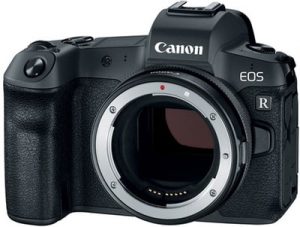
Canon has entered the mirrorless game with the Canon EOS R, a revolutionary camera that introduces an entirely new lens mount that has been designed for optical excellence today and incredible optical potential for the future, according to Canon.
Features:
The camera has a 30.3 MP CMOS sensor and the DIGIC 8 image processor, and its built-in electronic viewfinder has approximately 3.69 million dots, which together provide a bright, sharp and colorful 100 percent view of the subject at hand.
Thanks to a variety of mount adapter options, you can use your existing Canon or third-party lenses with the Canon EOS R.
Pros: Fantastic electronic viewfinder. Compatible with older Canon lenses. Superb autofocus performance. Bluetooth and Wi-Fi connectivity.
Cons: Larger than most other mirrorless cameras.
5. Nikon D7500
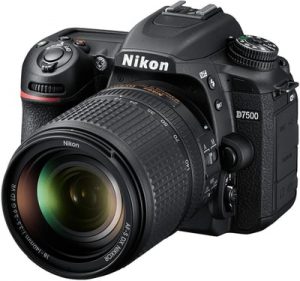
The Nikon D7500 is a great choice for those who have no use for professional DSLRs but want something better than what the entry level models have to offer.
Features:
It uses the same 20.9 MP DX-format image sensor and Expeed 5 image processing engine as the D500, allowing you to enjoy top-tier image quality at a relatively affordable price.
4K video capture is possible at 30, 25, and 24 frames per second, and you can seamlessly output everything the camera sees via HDMI.
Thanks to Nikon SnapBridge technology, you can transfer pictures and videos from the camera over Bluetooth or Wi-Fi, so you can pack an extra memory card instead of a USB data cable.
Pros: The same sensor and image processing engine as the D500. Live HDMI output. Excellent ergonomics. Support for Nikon SnapBridge technology.
Cons: Has only one memory card slot.
6. Canon EOS-1D X Mark II
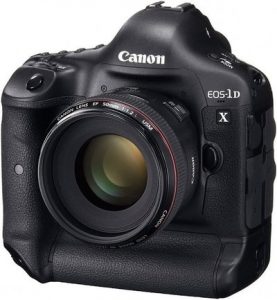
If you’re a professional photographer—or aspire to become one—you need professional equipment.
Features:
The Canon EOS-1D X Mark II is designed for professional sports photography, which is why it can capture up to 14 frames per second continuously.
With a CFast card, its burst rate reaches up to 170 RAWs, giving you a very high chance of getting the perfect shot of a fast-moving subject.
The camera also copes extremely well with poor lighting conditions thanks to its wide ISO range, which is expandable to 409,600.
Pros: Incredibly fast. Great for sports photography. 4K video recording at up to 60 frames per second.
Cons: Very expensive. Very expensive.
7. Nikon Z7
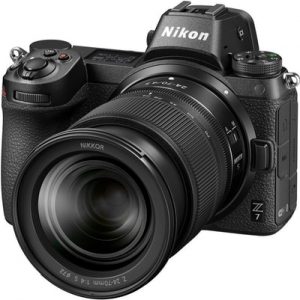
There’s nothing new about mirrorless cameras. But when one of the most respected and influential camera companies introduces a new mirrorless camera, everyone pays attention.
Features:
The Nikon Z7 is a mirrorless camera done right. It’s relatively light, small, and compatible with more than 90 F-Mount NIKKOR lenses.
You can also use it with new NIKKOR Z lenses, which have been designed with the mirrorless form-factor in mind to deliver corner-to-corner sharpness even at their widest aperture.
Pros: Nearly flawless ergonomics. Redesigned electronic viewfinder. Many lens options available.
Cons: Only one memory card slot. Pricey lenses.
Conclusion
You don’t have to be a professional photographer to use a DSLR camera, but having one makes it much easier to achieve professional results. These days, even entry-level DSLRs offer solid image quality, and they come packed with a whole host of useful features that make them worth their price. Just keep in mind that you also need a high-quality lens to use your DSLR camera to its full potential.
FAQ
What are some of the best DSLR cameras released in 2024?
Notable DSLR cameras from 2024 include the Nikon D850, Canon EOS 5D Mark IV, Nikon D7500, Canon EOS 80D, Pentax K-1 Mark II, Nikon D500, and Canon EOS Rebel T7i. Each of these models brought significant features and improvements popular among photographers.
Which DSLR camera from 2024 is the most user-friendly for beginners?
The Canon EOS Rebel T7i is renowned for its user-friendly interface, making it an excellent choice for beginners. It offers a helpful guide mode that assists new users in understanding camera settings and techniques.
For professional photographers, which 2024 DSLR camera is recommended?
Professional photographers often prefer the Nikon D850 or the Canon EOS 5D Mark IV due to their full-frame sensors, advanced features, and robust build quality suitable for various photography genres and challenging conditions.
What makes the Nikon D850 stand out among 2024 DSLR cameras?
The Nikon D850 boasts a high-resolution 45.7-megapixel sensor, exceptional dynamic range, and fast autofocus performance. It’s also versatile, excelling in both stills and video recording.
How does the Canon EOS 5D Mark IV cater to videographers?
The Canon EOS 5D Mark IV caters to videographers with its 4K video capabilities, Dual Pixel CMOS AF for smooth focusing, and a variety of pro-level video features. This makes it a strong contender for multi-disciplinary shooters.
Is the Nikon D7500 suitable for sports and wildlife photography?
Yes, the Nikon D7500 is equipped with a fast 8 frames per second burst rate and a 51-point autofocus system, making it well-suited for capturing fast action like sports and wildlife.
Can the Canon EOS 80D handle low light situations effectively?
The Canon EOS 80D performs admirably in low light situations, thanks to its 24.2-megapixel APS-C sensor with improved ISO capabilities and a strong autofocus system that can focus in near-darkness.
What are the advantages of the Pentax K-1 Mark II’s Pixel Shift Resolution system?
The Pentax K-1 Mark II’s Pixel Shift Resolution system captures multiple images, shifting the sensor by one pixel for each shot. This process enhances color accuracy and detail by capturing full-color data for each pixel, resulting in higher resolution images with less noise.
How does the Nikon D500 stand out for action photography?
The Nikon D500 is a top performer for action photography due to its 10 fps burst rate, advanced 153-point autofocus system, and robust build that can withstand demanding shooting environments.
Which 2024 DSLR offers the best value for money?
The Canon EOS Rebel T7i offers excellent value for money with a solid feature set including a 24.2-megapixel sensor, Dual Pixel CMOS AF, and a vari-angle touchscreen, all at a relatively affordable price point for its capabilities.
What is the battery life like on the Nikon D850?
The Nikon D850 offers impressive battery life, capable of shooting up to 1,840 shots on a single charge, which is beneficial for photographers who spend long hours on shoots without access to charging.
Does the Canon EOS 5D Mark IV have built-in Wi-Fi?
Yes, the Canon EOS 5D Mark IV features built-in Wi-Fi and NFC connectivity, allowing photographers to easily share images and control the camera remotely using a compatible smartphone or tablet.
Are there any mirrorless cameras that competed with DSLRs in 2024?
In 2024, mirrorless cameras like the Sony A7 III and the Fujifilm X-T3 offered strong competition to DSLRs with their compact size, advanced features, and rapid performance. However, many photographers still preferred the optical viewfinder and longer battery life of DSLRs.
What type of memory cards does the Nikon D7500 support?
The Nikon D7500 supports SD, SDHC, and SDXC memory cards, giving photographers flexibility in their choice of storage options.
How does Canon’s Dual Pixel CMOS AF technology enhance the performance of the EOS 80D?
Canon’s Dual Pixel CMOS AF technology in the EOS 80D significantly improves live view and video autofocus performance, providing smooth and fast focusing akin to that of a camcorder.
What is the weight of the Pentax K-1 Mark II, and is it considered heavy for a DSLR?
The Pentax K-1 Mark II weighs approximately 1010g (without a lens), which is on the heavier side for a DSLR, but its robust construction and weather-sealing justify the weight for many outdoor and landscape photographers.
Can the Nikon D500 record in 4K resolution?
Yes, the Nikon D500 has the ability to record in 4K UHD (3840 x 2160) resolution, making it a good choice for those who need high-quality video and stills from the same camera.
What unique feature does the Canon EOS Rebel T7i offer for photographers new to DSLR cameras?
The Canon EOS Rebel T7i features a unique visual guide and user interface that help new DSLR users understand camera settings and photographic techniques through a straightforward, informative menu system.
Is the autofocus system on the Nikon D850 suitable for tracking fast-moving subjects?
Yes, the Nikon D850 has a high-performance autofocus system with 153 focus points, including 99 cross-type sensors, which are excellent for tracking fast-moving subjects and maintaining focus accuracy.
How has the image stabilization improved in the Pentax K-1 Mark II?
The Pentax K-1 Mark II incorporates an improved in-body 5-axis SR II (Shake Reduction II) image stabilization system, which compensates for camera shake in five directions and helps photographers shoot sharper images at slower shutter speeds.
For more information on DSLR cameras and reviews, photographers can visit reputable websites like B&H Photo Video or Digital Photography Review.


